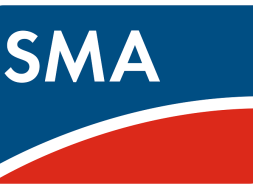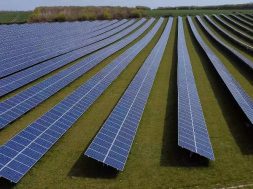
India, Britain Collaborate To Make Next-Gen Solar Cells
Kolkata: A team of researchers from Britain and India has kicked off a project to develop the next-generation photovoltaics (PV) in the country with the aim to have mobile labs that can manufacture these devices at a lower cost.
The 8 million pound Strategic University Network to Revolutionise Indian Solar Energy (SUNRISE) project is powered by the Global Challenges Research Fund to rapidly accelerate and prove low cost printed PV and tandem solar cells for use in off grid Indian communities within the lifetime of the project (October 1, 2017 to December 31, 2021).
One of the project investigators, Matthew Davies of Britain’s Swansea University told IANS: “We need to catalyse interest in scientific research in India to help this project.”
“We hope to have labs in India… mobile labs that can make these devices so they are very cheap to make and they are easy (to make) so in future we hope to develop a route where we have a factory (in the lorry essentially) where we can make PVs.”
The Indian partners include IIT Delhi, NPL Delhi, CSIR Hydrabad, IISER Pune and IIT Kanpur.
“We want to develop the use of the next-gen photovoltaic materials in India. So we are looking to develop buildings as power stations that means that your house, the building envelope, becomes the material with which you generate the electricity. That may involve, especially in India, photovoltaics on the roof,” Davies said.
To enable the manufacturing of next-gen technologies in India, the strategy is to set up graduate programmes in the respective areas.
“… so we want to set up graduate programmes here, so we have programmes teaching Indian doctorate students and other students how to make these solar cells for the villages and develop mobile labs, so we can share the benefit of solar energies and technologies, clean water and clean sanitation technologies,” he said.
Davies was speaking on the sidelines of ‘OPTRONIX’, the fourth International Conference on Opto-Electronics and Applied Optics, 2017, organised by the University of Engineering & Management (UEM) in association with the Institute of Engineering & Management (IEM).
While the current generation of PVs tap into silicon, the stress is on crafting materials and technologies of low toxicity, that are cheap to make and of high performance. They should be printable and flexible as well.
“We want to use solar power responsibly. Silicon is widely used which is first generation and very efficient and stable but it takes a lot of energy to make these PVs… So it takes a long time to payback and they are also very rigid so the type of technologies we work on we can print so they can be flexible… they can make very large areas of them, very cheaply with very little energy.
“They are easier to integrate into buildings… say as in windows. So we are working on range of technologies such as perovskites, dye-sensitised solar cells, organic PVs. We are looking at whatever we can print,” Davies said.
The research impact of scalable and stable low cost metal mounted PV products will be supported by technology demonstration at five off grid village communities (each of up to 20,000 people).
“There are two stages: the adoption of current photovoltaic technologies which we are keen. At the same time, we need to work at the next gen technologies.
“Today most countries use silicon. It does work very well, but we are looking at adding functionality to things and lower cost and the energy that goes into making of these devices,” Davies said.
“India has a fantastic attitude to solar photovoltaics so it comes right from the top. There is a real demand for electricity, particularly solar technology. The country has a very positive attitude and hopefully we can help and also learn from that,” he added.















